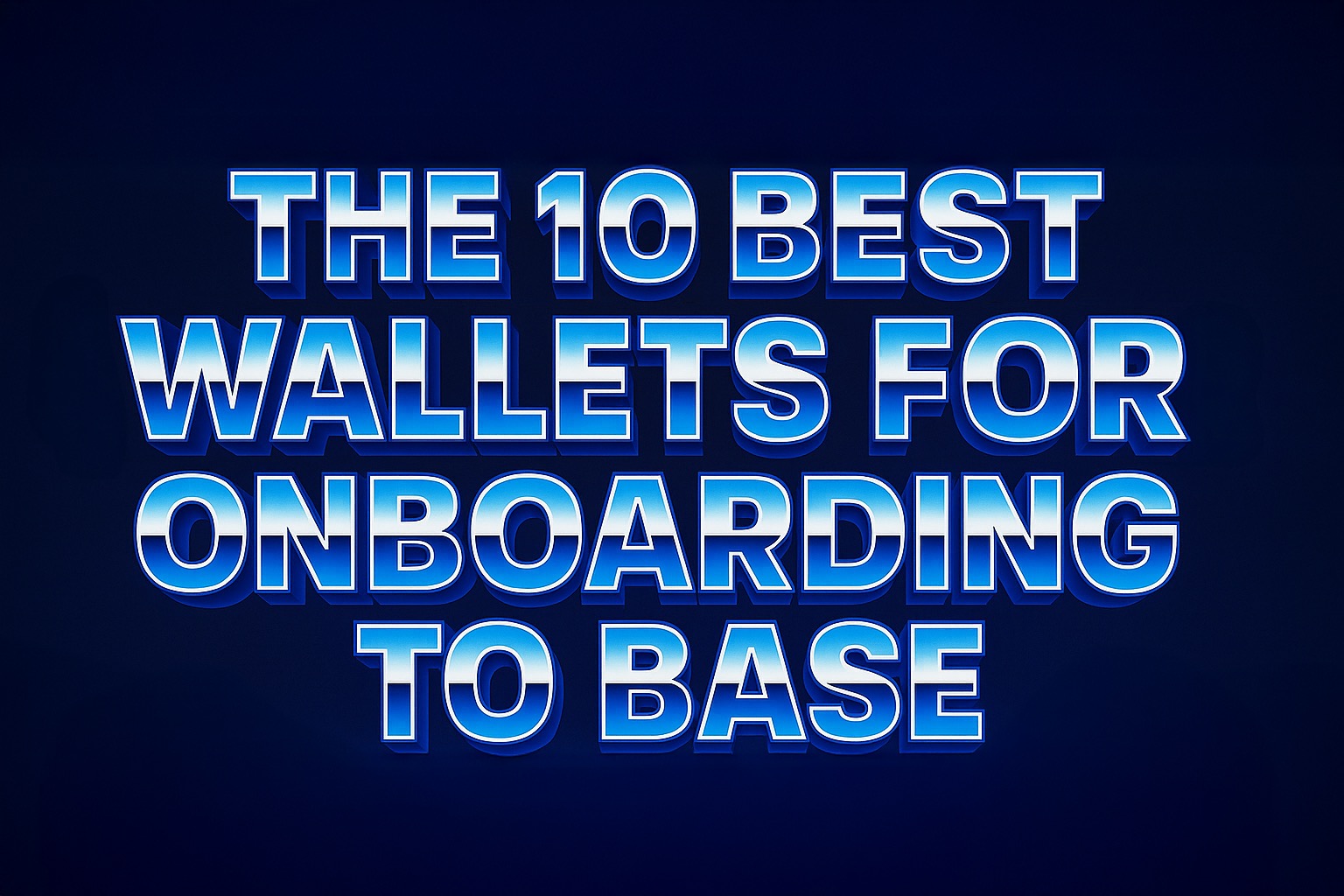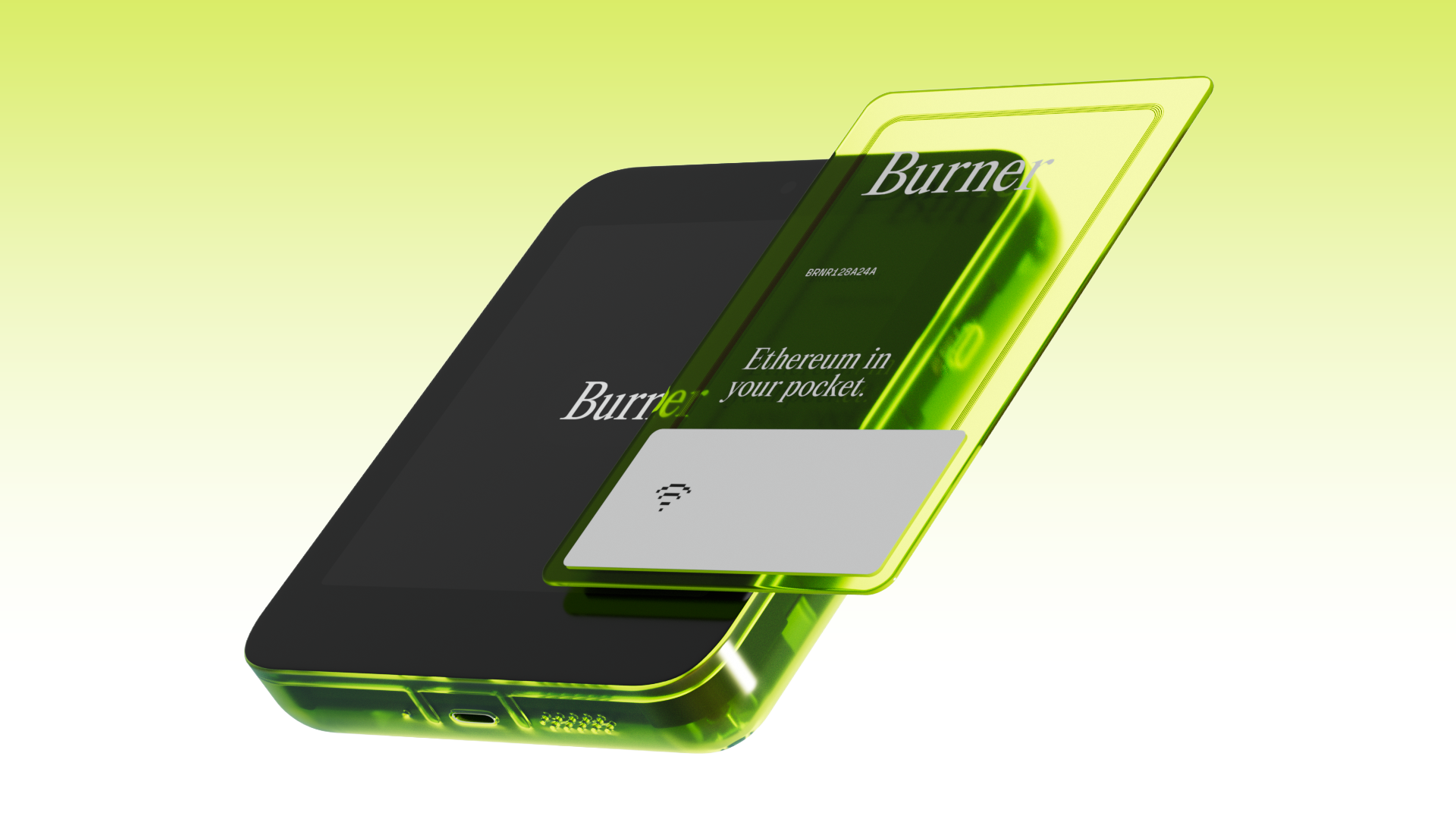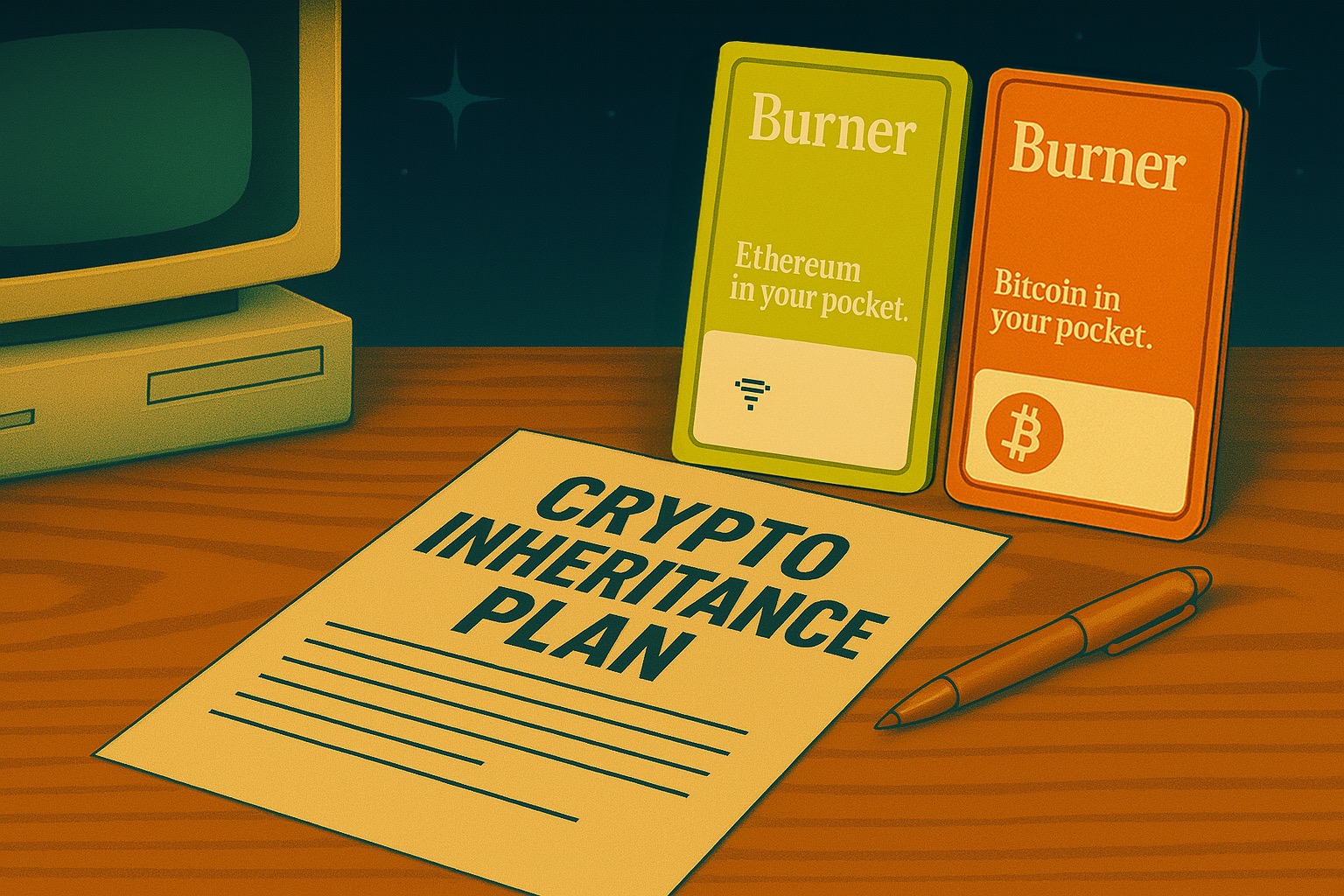The 10 Best Wallets for Onboarding to Base in 2025
Back to articles
Base, the Ethereum Layer 2 developed by Coinbase, is rapidly emerging as a network built for real users, not just speculators. With low fees and a smooth user experience, it’s powering the next generation of everyday crypto apps.
But for Base to truly reach new users, wallets need to meet them where they are. Not all wallets are built with onboarding in mind. Most non-custodial crypto wallets are designed for advanced DeFi use, making them confusing, or even intimidating, for everyday users. Some require manual network setup to connect to Base, most lack the ability to send stablecoins without gas fees, and nearly all still rely on seed phrases which can be easily lost or stolen.
This guide highlights the best non-custodial wallets for onboarding to Base in 2025—wallets that lower the barrier to entry, whether you’re setting up your first wallet, gifting crypto to a friend, or getting started with USDC or USD II.
Base Network Wallet Comparison Chart (2025)
Compare Base-compatible wallets across key onboarding features like everyday usability, seedless access, hardware-level security, gasless stablecoin support, and suitability for long-term storage. Whether you’re gifting crypto or setting up your first wallet, this chart helps you find the best fit.
| Wallet | Ideal For | Secure Hardware Chip | Built for Everyday Use | Seedless / No Recovery Phrase | Suitable for Long-term Storage | Gasless Stablecoin Support |
|---|---|---|---|---|---|---|
| Burner | Gifting, daily use, onboarding | ✅ Yes | ✅ Yes | ✅ Yes | ✅ Yes | ✅ Yes (USD II) |
| MetaMask | DeFi, Ethereum power users | ❌ No | ✅ Yes | ❌ No | ❌ No | ❌ No |
| Trust Wallet | Mobile app-first crypto users | ❌ No | ✅ Yes | ❌ No | ❌ No | ❌ No |
| Coinbase Wallet | Coinbase ecosystem users | ❌ No | ✅ Yes | ❌ No | ❌ No | ✅ Yes (USDC) |
| Rainbow Wallet | Mobile app-first Ethereum users | ❌ No | ✅ Yes | ❌ No | ❌ No | ❌ No |
| Argent | Social recovery seed management | ❌ No | ✅ Yes | ✅ Yes | ❌ No | ❌ No |
| Exodus | Visual portfolio management | ❌ No | ✅ Yes | ❌ No | ❌ No | ❌ No |
| MyEtherWallet | Manual wallet management | ❌ No | ✅ Yes | ❌ No | ❌ No | ❌ No |
| Phantom Wallet | Solana-focused crypto users exploring Base | ❌ No | ✅ Yes | ❌ No | ❌ No | ❌ No |
| Backpack | Solana-focused crypto users exploring Base | ❌ No | ✅ Yes | ❌ No | ❌ No | ❌ No |
Which Base Wallet Is Right for You?
From gifting to daily spending to secure storage, here’s how the top wallets stack up—so you can choose the one that actually fits how you’ll use Base.
Burner

Burner wallet is a physical hardware wallet the size of a credit card, designed for real-world usability and onboarding on the Base network. It combines the security of a hardware wallet—with secure chip technology and PIN-based access—with the instant accessibility of a software wallet. There’s no seed phrase to lose and no app to install. Just tap to launch in your browser and go.
It’s fully optimized for Base and pairs seamlessly with USD II, a gasless stablecoin built for gifting and everyday use.
BurnerOS: A Wallet That Runs in Your Browser
BurnerOS is the browser-based software layer that powers Burner.. When you tap your card, BurnerOS opens instantly—no downloads, no updates, and no login headaches.

You can view your balance, send and receive stablecoins, connect to dApps via WalletConnect, and even view NFTs—all from a clean, tap-to-use interface that’s simple enough for first-time users. Because it runs in the browser and updates automatically, there’s no risky software to install. BurnerOS delivers the benefits of a modern wallet without the usual trade-offs in usability or safety. Here’s why that matters.
USD II: The Stablecoin Built for Base

USD II is a fiat-backed, stablecoin issued on the Base network by Burner. It’s backed 1:1 by U.S. dollars and treasury reserves through our partner Bridge, and securely managed by Privy.
When used with BurnerOS, USD II offers completely gas-free transfers and swaps—making it the easiest way to send crypto to friends and family without needing to explain gas fees or complicated wallet setups. Whether you’re onboarding a friend or sending a stable, spendable digital dollar, USD II makes it feel as easy as using Venmo. Learn more about USD II.
MetaMask Software Wallet
MetaMask is a browser-based crypto wallet developed by ConsenSys. It supports a wide range of ERC-20 tokens and blockchain networks, and can be configured for Base through manual network setup or MetaMask Snaps. MetaMask allows access to Base ERC-20 tokens and Base-native applications. It relies on seed phrases for recovery and does not support gasless stablecoin swaps or transfers.
Trust Wallet Software Wallet
Trust Wallet is a mobile wallet developed by Binance for managing crypto assets on mobile devices. It supports a variety of cryptocurrencies and blockchain networks and includes a built-in browser for accessing decentralized applications. Trust Wallet does not include cold wallet support, seedless recovery options, or gasless stablecoin transfers.
Coinbase Wallet Software Wallet
Coinbase Wallet offers a convenient option for Coinbase exchange users who want to move assets to self-custody. It supports a wide range of ERC-20 tokens, and transfers of USD Coin (USDC) within the Coinbase ecosystem do not incur gas fees. Coinbase Wallet requires users to manage seed phrases for recovery and does not include hardware-level security by default.
Rainbow Software Wallet
Rainbow is a software wallet designed for Ethereum and ERC-20 tokens. It has a mobile-first design for managing digital assets across devices. Rainbow Wallet does not offer hardware-level security or offline storage.
Exodus Software Wallet
Exodus is a software wallet available on both desktop and mobile platforms. It supports asset management on Base and other networks through custom network setup, and is designed with an emphasis on visual portfolio tracking. Exodus does not offer seedless recovery or hardware-level security, and it is closed source.
Argent Software Wallet
Argent is a mobile smart contract wallet that supports Base and other Ethereum Layer 2 networks. Instead of traditional seed phrases, Argent uses social recovery, allowing users to restore access through trusted contacts. It also provides integrated DeFi tools and security controls such as daily transfer limits and trusted session approvals.
MyEtherWallet (MEW) Software Wallet
MyEtherWallet is an open-source wallet that supports Ethereum, Base, and other EVM-compatible networks. It is available as a web interface, mobile app, and browser extension, and provides tools for managing tokens, NFTs, and connecting to dApps. Its feature set is best suited for experienced users.
Phantom Wallet Hardware Wallet
Phantom began as a Solana wallet and is available on both desktop and mobile. It now also supports Bitcoin and Base, offering features such as in-app token swaps and phishing protection, though it still relies on seed phrases for recovery.
Backpack Hardware Wallet
Backpack is a wallet developed by the team behind the Mad Lads NFT project, with support for Solana and growing support for networks like Base. It is designed for NFT collectors and gamers, and relies on seed phrases for recovery.
Final Thoughts: Onboarding to Base Shouldn’t Be a Barrier
Base is designed to be the Ethereum Layer 2 where real users interact with real apps. But too often, wallets still assume you’re an expert, or willing to become one. Seed phrases, network setups, and clunky UX are still common.
That’s why onboarding-friendly wallets matter. Burner and USD II rethink the basics: security without seed phrases, gasless stablecoin transfers, and browser-native design that actually feels usable.
Most people won’t onboard to Base unless the first step is dead simple.
Burner and USD II weren’t built to do everything. They were built to do one thing well: make onboarding easy, secure, and actually usable—combining the security of a physical hardware wallet with secure chip technology and the convenience of a software wallet. It’s safe enough for serious use, simple enough to gift, and smooth enough to bring anyone into crypto.
FAQ: Choosing the Right Wallet for Onboarding to Base
❓ What should I look for in a wallet for Base?
Look for wallets that natively support Base or allow easy network switching, offer a clean, intuitive interface, and make sending/receiving assets like USDC or USD II simple even for first-time users.
❓ Which wallets are best for onboarding someone new to crypto on Base?
Burner wallet is purpose-built for gifting and onboarding, with seedless PIN access and gasless stablecoin transfers. Coinbase Wallet is also beginner-friendly, especially for users already in the Coinbase ecosystem.
❓ Can I use Burner on the Base network without installing an app?
Yes. Burner wallet runs directly in your browser using BurnerOS—no app to download or install. Base is selected by default, so using Burner on the Base network is as easy as tapping your card and confirming the network. You’re ready to go in seconds.
❓ Do all wallets support gasless transfers on Base?
No. Most wallets require standard gas fees. Burner wallet supports both gasless transfers and swaps with USD II on Base through BurnerOS. Coinbase Wallet also supports gasless USDC transfers within its ecosystem, but not swaps.
❓ Do all wallets support gasless swaps on Base?
No. Most wallets require standard gas fees. Burner wallet supports both gasless swaps and transfers with USD II on Base when used through BurnerOS. Coinbase Wallet does not support gasless swaps, only transfers within its ecosystem.
❓ What happens if I lose access to my Base wallet?
Most wallets rely on a seed phrase for recovery. If you lose that phrase, there’s no way to regain access—your funds are permanently lost. Burner works differently. It uses PIN-based access instead of a seed phrase and allows you to create a backup card using BurnerOS. If your original card is lost but you’ve made a backup, you can recover your wallet easily. Without a backup, recovery isn’t possible.
❓ Can I store multiple Base assets in one wallet?
Yes. Most wallets listed here support a wide range of ERC-20 tokens and other crypto assets on Base. However, only Burner combines full support for Base assets with gasless transfers and swaps, seedless PIN-based security, and a secure hardware chip making it uniquely suited for both everyday use and secure onboarding.
❓ Is a hardware wallet required to use Base securely?
No, but it’s recommended for long-term storage. Traditional hardware wallets like Ledger and Trezor offer strong offline (cold) storage, but they can be complex and intimidating for new users. Burner is the only hardware wallet designed specifically for onboarding to Base, combining secure chip protection with a simple, browser-based experience.

Get your Burner
What to read next
Back to articlesHow to Bridge Ethereum to Base: The Complete Guide (2025)
Bridging ETH to Base is the fastest way to access low-cost, high-speed Ethereum transactions. This guide explains how blockchain bridges work, what to consider when choosing one, and how to bridge securely using your Burner wallet. Learn how to minimize gas fees, avoid common pitfalls, and start exploring dApps on Base in minutes.
Burner Terminal: Tap to Pay for Stablecoins
Burner Terminal is the first point-of-sale built for native tap to pay stablecoin payments. Designed for small businesses everywhere, it makes accepting crypto as easy as tapping a card or scanning a QR code. Simple, fast, and secure, Burner Terminal brings the benefits of cash to digital payments without chargebacks, high fees, or complexity.
Don’t Let Your Crypto Die With You: Burner Makes Inheritance Simple
Crypto inheritance has often been overlooked. It’s complicated to plan, easy to lose, and impossible to recover without the right keys. Burner makes it simple. Designed for real-world handoff, Burner replaces fragile recovery phrases with a secure PIN and a physical device you can safely store, back up, and pass on. This guide explains why traditional wallets fall short, how Burner solves the inheritance problem, and what steps you can take today to ensure your digital assets aren’t lost tomorrow.


